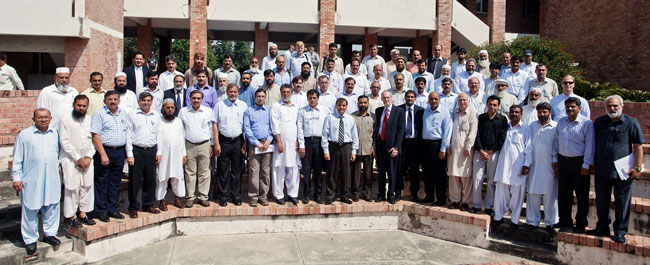By Yahya Rauf/CIMMYT
A meeting last month highlighted the efforts of the Pakistan Agricultural Research Council (PARC) and CIMMYT to improve wheat in the country. PARC and CIMMYT-Pakistan organized the annual wheat planning and Wheat Productivity Enhancement Program (W-PEP) meeting from 17 to 18 September at the National Agriculture Research Centre (NARC) in Islamabad.
The meeting reviewed progress and achievements during the last three years under the United States Department of Agriculture (USDA) funded W-PEP program and refined work plans for 2013-14. The program is aimed primarily at developing wheat varieties that resist Ug99 stem rust as well as fostering seed multiplication and distribution, improved agronomic practices and human resource development in the agriculture sector to ensure food security. During the inaugural session, USDA Agriculture Counselor Clay Hamilton said the USA and Pakistan have a long history of agricultural collaboration. The U.S. will continue to provide support for wheat productivity in Pakistan, he said.
Shahid Masood, PARC scientist from the Plant Sciences Division, highlighted PARC’s role in strengthening the national and provincial agricultural research system in coordination with national and international collaborators and research partners. Imtiaz Muhammad, CIMMYT country liaison officer for Pakistan, briefed the participants about W-PEP’s achievements during last three years and the impact of this program on the national wheat research system in rust surveillance, breeding, pre-breeding and capacity building, which led to the release of Ug-99 resistant wheat varieties like NARC-2011. National partners from all provinces, including Azad Jammu and Kashmir and Gilgit Baltistan, presented their achievements and work plans for 2013-14. They acknowledged the role of USDA, CIMMYT and PARC in supporting wheat productivity enhancement in Pakistan.
 Nutrition, health and food security
Nutrition, health and food security